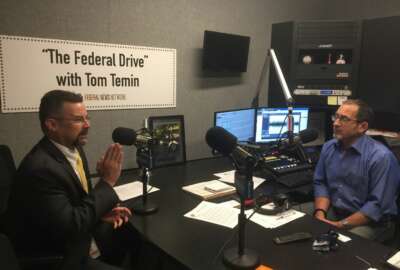Despite the scattered arrangement of State Department employees around the world, going to a remote and hybrid work environment during the pandemic was less challenging than IT officials expected. Home internet connectivity, including in developing or rural parts of the world, is stronger than it used to be and in fact, many growing economies bypassed the wireless era and made investments directly into wireless and LTE technologies.
“The carriers of the world have updated all the networks worldwide. There’s alliances with telecoms all over. And we were very surprised that connectivity itself was not as big of a challenge as we thought,” said Ivan Watson, the State Department’s deputy chief information officer for Operations, on Federal Monthly Insights — Secure Tools for a Telework Future.
The labor laws of each country are different regarding workplace reentry, but Watson said people enjoyed coming back for the most part. Not so much in Washington, D.C., where Watson said people have really embraced telework, but now his team needs to make sure building systems work. The State Department must consider if it needs more hoteling, more Wi-Fi instead of a surplus of empty office space, he said.
“I think, as people get more used to it and start coming back to work a little more often, we’ll probably see upticks maybe in the middle of the week. But, when it goes from the beginning of the week to the end of the week, maybe that tapers off,” Watson said on Federal Drive with Tom Temin.
It is all part of the ongoing support of a more permanent teleworking federal workforce. This includes allowing people to redesign their own workflows for better productivity and accessibility. Is printing always necessary? Is using Excel always necessary? What about a digital signature, or a more mobile-friendly application instead?
“Those are the things that we continue to, well at least in my office, we continue to push forward these ideas and concepts and it’s more of a cultural change than anything, right?” he said. “So it’s a lot of work ahead of us. But, I think the technology is there to support everything that we talked about.”
Although State tried to pivot away from VPN, which Watson said is not “the future,” the transition was not as simple as they expected. The department is in a transition period where many assets need VPN but some assets with commercial partners are accessible through an SSL website certificate. A shift is coming, Watson said, and his team is working in the background to facilitate that but he advised caution so as not to unnecessarily expose themselves or break useful things.
When considering if third-party, cloud-based apps make more sense for remote workers rather than something runs on a mainframe, Watson pointed to the department’s use of Microsoft 365 suite.
“The user now has all these applications that they can do, they can automate their own work workflows, they don’t really need us, you don’t need an IT expert. So some of these applications are complex, some of them are not, right, so it depends what the end user wants to do,” he said.
This is a sign that power is moving towards the end user with less reliance on IT professionals to show them how to do things. As such, training will be critical for an organization looking to go hybrid or fully remote, as well as making sure the enterprise is not too restrictive for users. If it is, they are likely to branch off and use other applications, which creates a “shadow IT” environment.
“How are we as an organization incorporat[ing] training and user training, that they can actually exploit the advances of these tools that we have, these environments that are available – at any time,” he said. “And I think that’s going to be key going forward is training, user knowledge.”
Copyright
© 2024 Federal News Network. All rights reserved. This website is not intended for users located within the European Economic Area.





